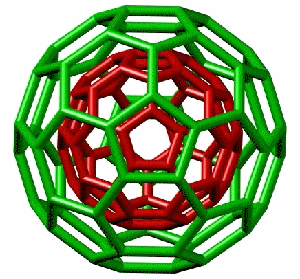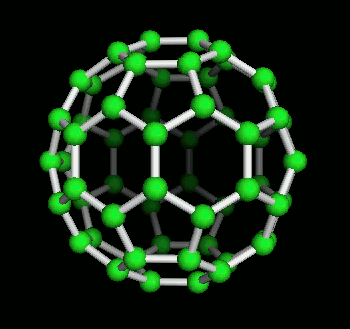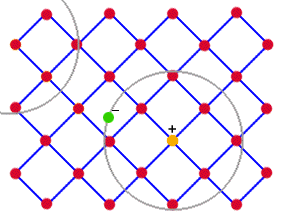_ Department of nano- fullerence
Studying the purification of nanofluorenes by column chromatography for the manufacture of nanoelectronic devices and devices (important article, please pay more attention)
Researcher and author: Dr. ( Afshin Rashid)
_sbj9.gif)
Note: Purification of nanofullerenes is usually done by high-performance column chromatography. Also, on a smaller scale, sublimation can be used to produce solvent-free fullerenes with high purity. Fullerenes are soot-like solids that are dark in color and in some cases bright.
The solubility of fullerenes in hydrocarbon solvents is usually small, but it is high in aromatic nanomolecule solvents, and larger fullerenes dissolve less than smaller fullerenes in nanostructured compounds. This category of nanostructure compounds was obtained for the first time by electrical discharge method. Of course, the exact mechanism for the formation of fullerenes is not known, but it seems that they are produced during the creation of carbon plasma. Purification of fullerenes is usually done by high-performance column chromatography. Also, on a smaller scale, sublimation can be used to produce solvent-free fullerenes with high purity. Fullerenes are soot-like solids that are dark in color and in some cases bright. The solubility of fullerenes in hydrocarbon solvents is usually small, but it is high in aromatic nanomolecule solvents, and larger fullerenes are less soluble than smaller fullerenes in nanostructured compounds. Buckyballs can, when compressed, return to their original shape and spin at amazing speeds.

Fullerenes are the constituent particles of bucky wings in conductive electrical nanodevices. Buckyball and fullerenes are among the materials that many nanomaterials are based on. One of the most important and unique properties of fullerenes is their ability to keep atoms or small molecules inside the carbon cage. The importance of the spatial and electronic parameters related to the cage structure such as fullerene is among the factors of this and the importance of the inclusion of nanostructures and the stability of these compounds. Optical properties, ionization and electron-withdrawing energies, and relative stability of different multiplicities of fullerons are very effective in the proliferation of nanoelectronic devices.
Nano fullerenes can be defined as materials that have at least one external dimension with a size of 1 to 100 nm. and the particle size of at least half of the particles in the number size distribution must be 100 nm or less. In nanoelectronics, nanofullerenes can occur naturally, be created as byproducts of combustion reactions, or be purposefully engineered to Perform a specific function to be produced. These materials can have different physical and chemical properties from their original bulk samples. Nanofullerenes are used to bend in response to the application of electric voltage .

The use of nano-fullerenes is widespread in a wide range of industries and consumer products. In nanoscience, the structure of materials determines the relationship between atoms, ions and molecules that make up those materials. To understand the structure of materials, one must first understand the type of connections between atoms and ions . Chemical bonds determine how atoms and ions are connected. Therefore, the difference between different types of connections can be seen in the characteristics of these links.
Conclusion :
Purification of nanofullerenes is usually done by high-performance column chromatography. Also, on a smaller scale, sublimation can be used to produce solvent-free fullerenes with high purity. Fullerenes are soot-like solids that are dark in color and in some cases bright.
Researcher and author: Dr. ( Afshin Rashid)
Specialized doctorate in nano-microelectronics







